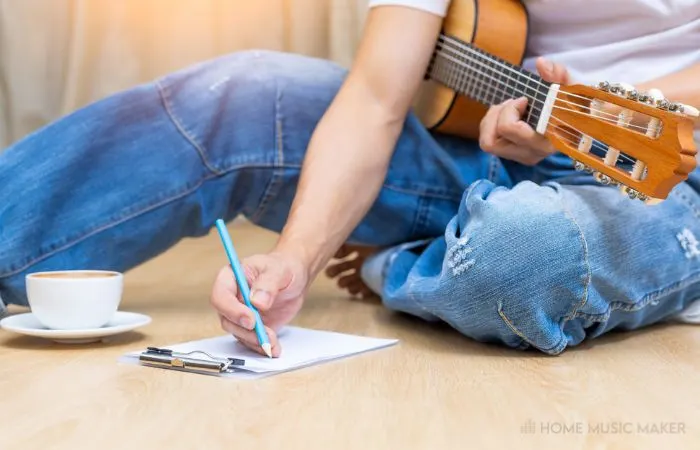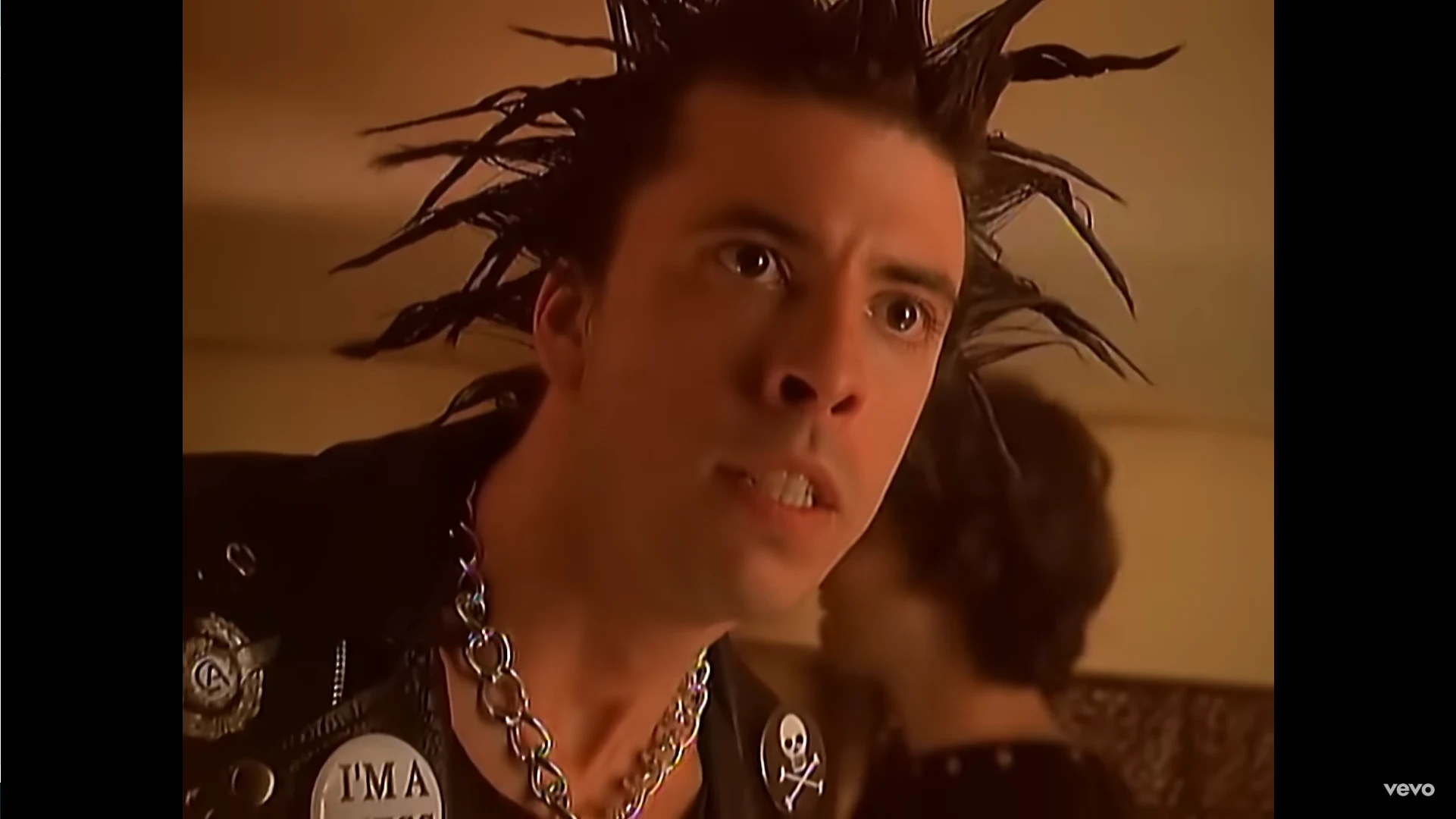KEY TAKEAWAYS:
Making sad music is about the tempo, chord progression, melody, arrangement, and lyrics. For example, sad songs are often at a slow/mid-tempo with a minor chord progression and lyrics. I recommend referencing and analyzing other sad songs to see how your favorite artists have done it.
Making Sad Music
If you are an aspiring artist/songwriter looking to tug at the heartstrings of your listeners, you must know the ins and outs of writing sad music.
If you don’t, you will have difficulty expressing the emotions you want in your music.
After writing music for the better part of my life, I have a solid grasp on writing in many different musical styles, including the sad and mournful.
In this tutorial, I will show you some tips and tricks that can get you started writing sad music!
What You Will Need To Follow This Tutorial
Here is a list of everything that you will need to follow along with this tutorial:
- An instrument to write on (piano, guitar, virtual instrument, etc.)
- Something to write song order and lyrics on (paper or digital document)

You will need a computer, DAW (digital audio workstation), audio interface, microphones, and more to record your music. However, simply writing sad music will only require the above-listed items.
How To Make Sad Music
Let’s dive into the process of making sad music and look at some tips and tricks to help you do so.
How To Start A Sad Song
To start a sad song, you should begin with a solid chord progression and tempo that you can write a melody and lyrics over.
Let’s take a look at some of my favorite sad chord progressions that you can try for yourself:
- i-VII-IV-IV (A minor, G Major, D Major, D Major)
- I-vi-IV-V (C Major, A minor, F Major, G Major)
- I-v-v-ii (C Major, G minor, G minor, D minor)
- vi-IV-I-V (A minor, F Major, C Major, G, Major)
- I-vi-iii-IV (C Major, A minor, E minor, F Major)
- I-ii-vi-IV (C Major, D minor, A minor, F Major)
- i-i-iv-v (A minor, A minor, D minor, E minor)
- i-i-VI-VII (A minor, A minor, F Major, G Major)
- i-v-VII-VII (A minor, E minor, G Major, G Major)
- i-III-iv-i (A minor, C Major, D minor, A minor)
You can use the chord degrees to play these chord progressions in any key you choose. However, if you don’t know how to read chord degrees, I have included the progressions in a sample key of C major/A minor.
Play around with these chord progressions at different tempos and see which one you want to use to help you get your sad song off the ground.
How To Make A Sad Melody
Now that we have a chord progression and tempo for our sad song let’s write a melody over it.
Whether you are writing a vocal or instrument melody, remember that it will set the tone of your song. For this reason, you must take your time and figure out something with the emotion you are trying to convey.

An excellent melody for a sad song will often be slower and more sparse than one you might hear over upbeat or happy music. Remember, the space between your notes is just as important as the notes themselves when writing a tremendous sad melody!
For example, your melody should not be over the top in a sad song. Instead, it should fit the mood of your chosen chord progression and provide just enough to drive your track.
Here are some things to play around with when writing a melody:
- The notes that you use
- The rhythm of the melody
- The speed that you play
- The density of the notes
- The velocity (loudness) of the melody
Take your time when trying to come up with a melody. It is one of the most critical factors in crafting a fantastic sad song.
How To Write Sad Song Lyrics
Writing sad song lyrics is all about channeling and using what impacts you emotionally.
Here are some potential topics to write a sad song about:
- Heartbreak
- Mourning/grief
- Loneliness
- Political oppression
- War
- Growing old and reminiscing
- Nostalgia
- Mental health issues
- Having the blues
- Feeling lost or helpless

As you can see, plenty of different topics inspire a sad song. It’s all about what touches you and how you can use it to write a song.
Remember that you can use these guidelines to write lyrics for any genre, such as Rap, Rock, Country, pop, Blues, etc.
Pro Tip
If you have difficulty starting lyrics for a song, try coming up with one chorus line you like and using it to inspire the rest of your tune.
READ NEXT:
Are you looking for some more insight into lyric writing? Check out our article on whether lyrics matter in a song.
How To Write A Depressing Song
If you want to take your sad song a step further into the realm of depression, there are a few things to focus on.
Tempo
I recommend keeping your tempo slow and dragging for a depressing song.
This will help to bring your listeners’ moods down and make them feel the depressing tone of your song.
Lyrics
As far as lyrics for a depressing song go, it would help if you focused on depressing topics, such as loss, grief, hopelessness, death, etc.
Keep your lyrical tone dark if you want to write a depressing song.
Arrangement
A sparse arrangement can also add to the depressing tone of your song.
For example, a massive arrangement with a bunch of different instruments might take away from the emotional impact of your song.
To make your track depressing, consider using just a few instruments. Here are a few suggestions for instruments that might work:
- Acoustic guitar
- Piano
- Strings
- Vocals
Keep your arrangement simple if you want to write a depressing song. It will add to the overall tone/emotion of your tune.
How To Make A Sad Rap Beat
Making a sad Rap beat is very similar to writing a sad song.
You will still start with a slower tempo and a chord progression/melody that fits the emotion that you are going for.

The main difference is going to be the arrangement. Instead of using conventional instruments, you will use electronic drums, synths, sound effects, etc.
To make a sad rap beat, stick to the above process but apply an arrangement that is more meant for Rap/Hip-Hop.
READ NEXT:
Where do you start with writing a song like this? To become more familiar with this, check out our article on whether to write music or lyrics first.
What Makes Sad Music Sound Sad?
Here are some of the main elements that go into writing a sad song:
- Tempo (most sad songs will be at a slow/mid-tempo)
- Key signature (a sad song can start in a major or minor key, but it will always include a minor chord or two)
- Chord progression (most sad songs will have a chord progression that either starts with or resolves to a minor chord)
- Melody (sad songs will have a mournful, sparse, and longing melody)
- Lyrics (sad songs are on topics that bring out sadness, grief, etc., in people)
- Arrangement (the arrangement that you choose for your song will play a role in its emotional impact)
Writing a sad song is a balancing act between these songwriting elements.
Some of The Best Sad Songs Ever Written
Here are some of the most legendary sad songs of all time:
- Hurt – Johnny Cash (cover)
- Wish You Were Here – Pink Floyd
- Dust In The Wind – Kansas
- The Boxer – Simon and Garfunkel
- Creep – Radiohead
- Champagne Supernova – Oasis
- Imagine – John Lennon
- Hotel California – Eagles
- Yellow – Coldplay
- House Of The Rising Sun – The Animals
- As My Guitar Gently Weeps – The Beatles
- American Pie – Don McLean
- Tiny Dancer – Elton John
- Everlong – Foo Fighters
- Back To Black – Amy Winehouse
Remember that this is only a handful of our time’s incredible sad songs. These are just some of my personal favorites!
Related Questions
Is Getting Goosebumps From Music Rare?
Getting goosebumps from music isn’t rare, but it doesn’t happen for everyone.
To get goosebumps from listening to music, you have to have a real connection to the music you are listening to. I know plenty of people who don’t enjoy music enough to experience this connection.
What Instrument Is Best For Writing Sad Songs?
This is a matter of opinion, but piano or strings are a great place to start for writing a sad song.
The acoustic guitar is another potential starting point for writing a sad song. It depends on the style of music that you write.
How Do You Make A Major Key Sad?
Consider going from your major root chord to the relative minor chord to make a major key sad.
The relative minor chord is three half-steps down from your major root chord. For example, if your major root chord is C Major, then the relative minor will be A minor.
Using the relative minor chord after a major root chord adds a sense of sadness and melancholy to a major key.
Does Sad Music Make You Happy?
In a way, yes. Sad music can sometimes improve your mood, similar to how therapy does.
For example, listening to sad music can be the same as talking about an issue you might be experiencing. Knowing that you aren’t alone in how you feel can be pretty cathartic.
If you don’t approach an issue or emotion you are feeling head-on, you will have trouble overcoming it. Listening to sad music can help us embrace and overcome certain things that we might be feeling.
What Notes Make Up A Minor Triad Chord?
To build a minor triad chord, pick a root note, go up three half steps to find the second note in your chord (minor third), and then go up another four half steps to find the third note in your chord (perfect fifth).
For example, a C minor is a C, an E-flat, and a G. You can use this formula to build a minor triad with any root note.
READ NEXT:
In my opinion, the best sad songs come from a deeper place within the songwriter. For more, look at our 7-step guide to writing a song from the heart.


 Want to connect with other music producers for help and guidance?
Want to connect with other music producers for help and guidance?